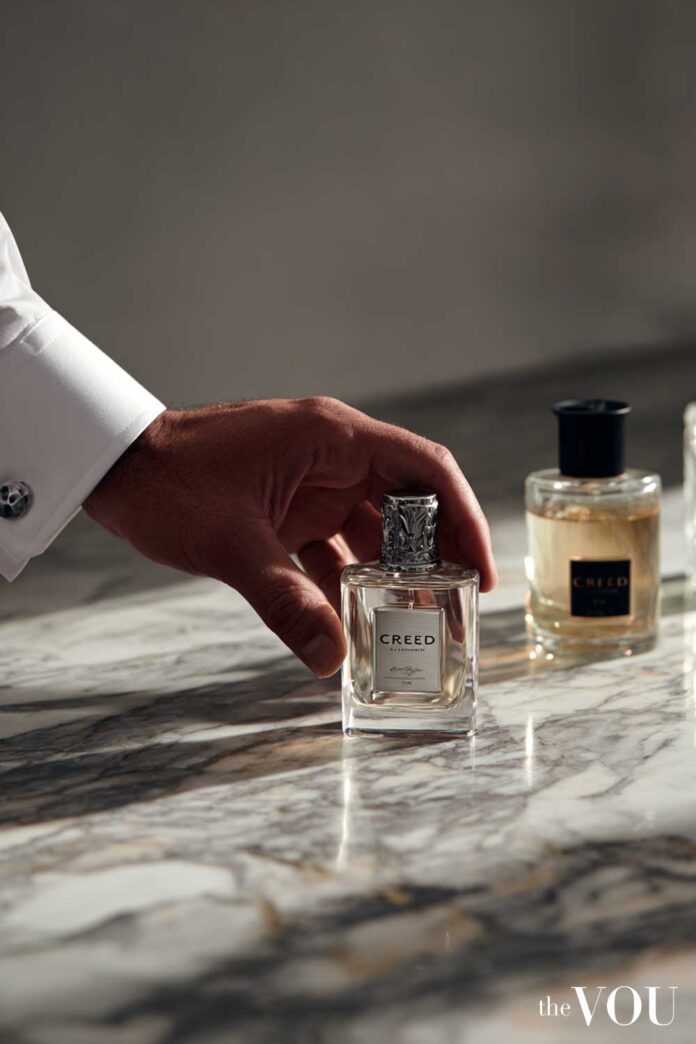A luxury fragrance is not just an accessory, but a strategic asset, an invisible uniform that boosts confidence, defines your personal brand, and leaves an unforgettable impression in both the boardroom and the bedroom.
While a well-tailored suit commands visual authority, a sophisticated fragrance operates on a more profound, visceral level.
However, the world of luxury perfume is vast and complex, and selecting a “signature scent” is an act of precision, not a game of chance, requiring an understanding of technical specifications, olfactory architecture, and personal chemistry.
In this guide, we’ll deconstruct the process of choosing the best fragrance for you into seven strategic principles.
1. Understand the Context (The Occasion)
Before you analyse a single note, you must define the fragrance’s objective. A tool is only as good as its intended function.
Are you after a “daily driver” for the office, or a high-impact “secret weapon” for special occasions?
- The Boardroom (Day/Work): Requires subtlety and sophistication. Prioritise fresh, clean scents like Citrus or light Woody families. The goal is to project confidence and refinement, not overwhelm.
- The Event (Evening/Formal): Demands greater presence and complexity. This is the context for richer Oriental (Amber) or deep Woody scents. The objective is to leave a memorable, alluring impression.
- The Special Occasion (Romantic/Intimate): Nuance is key. Warm, spicy, and inviting notes, such as vanilla, amber, musk, or sandalwood, are highly effective.
- The Downtime (Casual/Sport): Calls for energy and freshness. Aquatic or bright Citrus notes are the most appropriate, designed to refresh and invigorate.
2. Master the Technicals (Concentration)
“Fragrance” is a catch-all term. The performance, longevity, and price of a perfume are dictated by its technical classification – the concentration of perfume oil it contains. Understanding this is non-negotiable.
- Eau de Cologne (EDC): Contains 2-4% perfume oil. Lasts 2-3 hours. Best for a light, refreshing spritz.
- Eau de Toilette (EDT): Contains 8-15% perfume oil. Lasts 4-6 hours. This is a common concentration for many designer men’s fragrances.
- Eau de Parfum (EDP): Contains 15-20% perfume oil. Lasts up to 8+ hours. This is a higher-impact, longer-lasting investment, ideal for a signature scent.
- Extrait de Parfum (Pure Perfume): Contains 20-40% oil. This is the most potent and luxurious concentration, offering exceptional longevity and depth.
For a luxury investment, we advise prioritising Eau de Parfum (EDP) or Extrait de Parfum for their superior performance and complexity.
3. Know the Fragrance “Families”
Every fragrance is built upon a foundational “family.” Understanding this architecture is the first step to identifying your personal taste. The four primary families for men are:
- Woody: The cornerstone of masculine perfumery. Built on notes like sandalwood, cedarwood, and vetiver. It can be warm, dry, and comforting.
- Oriental (or Amber): Rich, warm, and opulent. Characterised by notes of amber, musk, vanilla, and exotic spices. These are powerful and best suited for evening wear.
- Citrus: Fresh, zesty, and energetic. Built on notes of bergamot, lemon, and grapefruit. Ideal for daytime wear, the office, and warm weather.
- Fougère: A classic “barbershop” family. Built on a blend of lavender, oakmoss, and coumarin (which smells like fresh-cut hay). It is aromatic, green, and quintessentially masculine.
Sub-families like Leather, Aquatic, and Floral (often lavender or jasmine in men’s scents) also offer further nuance.
4. Know the Scent Notes
A luxury fragrance is not a single, linear scent; it is a composition that evolves over time. This development is known as the “perfume pyramid” or “notes.”
- Top Notes: The initial impression, lasting 15-30 minutes. Often, bright citrus or aromatic notes are designed to capture your attention.
- Middle (or Heart) Notes: The core of the fragrance, emerging after the top notes fade. These are typically florals, spices, or green notes that define the scent’s character.
- Base Notes: The foundation of the scent. These are heavy, rich molecules (like woods, musk, and amber) that anchor the fragrance and are what you smell for the final 6-8+ hours.
You must judge a fragrance by its base notes, not its top notes. What you smell in the first 10 minutes is not what you will be wearing for the rest of an 8-hour day.
5. Prioritise Rare Ingredients & Craftsmanship
What separates a £50 fragrance from a £500 one? The same things that separate a generic suit from a bespoke one: quality of materials and craftsmanship.
Men’s luxury perfumes utilise rare, expensive, and often natural ingredients that are impossible to replicate with cheap synthetics. Look for fragrances built around “investment-grade” materials:
- Natural Oud (or Agarwood): A dark, complex resin that is one of the most expensive raw materials in the world.
- Ambergris: A rare, sea-cured substance that adds a unique, saline, warm quality.
- Orris Root: Prized for its powdery, violet-like scent, it takes years to harvest and process.
These scents are crafted by “master perfumers” – artists with decades of experience in balancing these rare ingredients. You are investing in their artistry, not just a liquid in a bottle.
6. Conduct a Skin Test
A fragrance does not exist in a vacuum. It is a chemical composition designed to interact with the unique oils and pH balance of your skin.
A scent that is exceptional on a paper test strip may be underwhelming or even unpleasant on your body.
Never invest in a luxury fragrance without conducting a proper field test. This often means acquiring samples or “decants” before committing to a full, expensive bottle.
Specialised retailers like Perfume Paradise can be a valuable resource for exploring and testing a wide array of high-end fragrances in smaller, more accessible formats.
- Apply to Pulse Points: Spray a small amount on your inner wrist or the crook of your elbow.
- Do Not Rub: Rubbing your wrists together “crushes” the fragile top notes and breaks the molecular structure, ruining the perfumer’s composition.
- Wait. Do not make a judgment for at least 10-20 minutes. Allow the alcohol to evaporate and the heart notes to emerge.
- Evaluate Over Hours: A true test lasts a whole day. You must understand how the fragrance evolves from its top notes to its final base notes on your skin.
7. Evaluate Performance, Longevity & Sillage
A fragrance’s performance is its return on investment. This is measured in two ways:
- Longevity: How many hours the scent lasts on your skin. A luxury EDP or Extrait should deliver a minimum of 6-8 hours of performance.
- Sillage (or Projection): The scent trail the fragrance leaves behind. High sillage is a “statement” that fills a room (e.g., Tom Ford Noir Extreme). Low sillage sits close to the skin, creating an intimate, personal scent bubble (e.g., Jo Malone Wood Sage & Sea Salt).
Your strategic context (Tip #1) dictates your desired performance. For the office, you want low to moderate sillage. For a special event, you may desire high sillage to ensure you are noticed.
The VOU’s Conclusion
Choosing a luxury perfume is a strategic investment in your personal brand. It is an analytical process that balances context, technical specifications, and personal chemistry.
By moving beyond a simple “smell test” and applying these seven principles, you can acquire a powerful olfactory signature that projects authority, sophistication, and an unforgettable presence.
Frequently Asked Questions (FAQs)
Q1: Which is the “No. 1” perfume for men?
There is no single “No. 1” perfume, as a signature scent is a highly personal choice calibrated to your skin and style. However, Creed Aventus is frequently cited as one of the most popular and iconic luxury fragrances in the world due to its unique blend and status.
Q2: What perfume gets the most compliments?
While subjective, fragrances that receive frequent compliments often have a strong, pleasant sillage and a mass-appealing scent profile. Scents like Dior Sauvage, Creed Aventus, and Jean Paul Gaultier Le Male are widely known for drawing positive attention.
Q3: What is the most masculine scent?
Masculinity in fragrance is subjective, but it is traditionally associated with specific fragrance families. Notes from the Woody (sandalwood, cedar), Leather, and Fougère (lavender, oakmoss) families are the historic cornerstones of masculine perfumery.
A passionate advocate for inclusivity and diversity, Aidan is the driving force behind The VOU as its Editorial Manager. With a unique blend of editorial acumen and project management prowess, Aidan's insightful articles have graced the pages of The Verge, WWD, Forbes, and WTVOX, reflecting his deep interest in the dynamic intersection of styling with grooming for men and beyond.
After years of managing hundreds of fashion brands from London's office of a global retailer, Mandy has ventured into freelancing. Connected with several fashion retailers and media platforms in the US, Australia, and the UK, Mandy uses her expertise to consult for emerging fashion brands create top-notch content as an editorial strategist for several online publications.

 Professional Body Shape Analysis for Men
Professional Body Shape Analysis for Men 
